|
|
In the early days of digital media, travel PR professionals initially came to terms with the phenomenon by treating social media as an “add-on” to traditional PR activities. They sensed there was some opportunity for promoting travel, and soon discovered they could share an online story over social media, but then went back about their business of pursuing placements within the traditional media outlets they had grown accustomed to working with. The relationship between websites, social media and online content and how they could all complement each other was far from understood.
|
|
Then PR pros began to realize those tweets, posts, likes and shares were more than just a fad and that they deserved more than just a passing nod. Recognizing they’d better get onboard or get left at the station, they subscribed to the old mantra: “If you lack certain expertise, then hire it.” So, they brought in a social media “expert” (typically a digital native newly graduated from college). PR professionals mostly reserved their own social accounts for personal use. At most they used them professionally to follow and track members of media — especially travel writers and editors. Otherwise, the PR team performed its customary function, while the social media team did theirs. Whatever thought was put into planning a social media strategy, for instance, was usually developed apart from the larger overall marketing strategy, including PR.
The above describes a typical siloed approach to marketing. It relies on the assumption that traditional PR and digital marketing would continue their journeys on separate, although related, tracks. Eventually, though, savvy PR professionals began projecting that the tracks did not run on parallel courses but were headed for an inevitable convergence. Now all astute travel marketers view digital marketing and PR as an integrated, complementary bundle of services that function as interrelated parts of a greater whole.
In many instances established destination marketing organizations evolved in the direction towards integration in an almost natural process as digital became more entrenched (and less distinguishable from “traditional” PR). A good case in point: Eight years ago, Market New Haven hired our agency to provide traditional PR services to promote its revitalized dining, shopping and cultural amenities. Market New Haven also recognized that social media was a critical component for reaching untapped markets. Pleased with our PR work, they hired us to take over their social media.
Two years later, we have embarked upon a fully integrated approach that combines branding, public relations, web development and social media into a single interrelated marketing strategy. Each element will complement the others in communicating Market New Haven’s message but each in its own way according to its specialized function and target audience. We will develop the InfoNewHaven.com website to serve not as a digital travel guide and information resource, but as a sophisticated, optimized marketing tool that reflects and functions as a part of the overall marketing strategy. It will work integrally with New Haven’s social media channels and promote the same resources and assets. As a public-private partnership, Market New Haven serves as a great example of how separate entities can collaborate to pursue a common goal of enhancing the community’s positive image, and now the marketing strategy follows that same seamless, collaborative approach.
As those who promote the travel industry embark on new marketing campaigns, they will increasingly follow a pattern similar to Market New Haven’s and demand a scope of work where each marketing activity acts as a link connected to the next to form a chain of interconnected services. Interaction between digital components and a robust website have already become increasingly important components of marketing campaigns, and this trend will only grow. Smart travel PR professionals are already adapting their way of thinking and approach to the business in light of these new circumstances.
One point travel marketers instinctively know: although integrated, each marketing discipline performs its own function best. A website successfully optimized to achieve a high organic search ranking serves a different purpose than an earned placement in the travel section of a newspaper. That story targets a different demographic than a carefully arranged and curated Instagram takeover. A timely blogpost may spark an impromptu side-trip to a destination, unlike an online itinerary planner that travelers wield to plan an extended vacation. And nothing else elicits the same response as the logo that distills a complex message into a single visual impulse. But all these pieces should harmoniously serve the same overarching goal. That’s the point of integrated marketing.
Each element performs a separate function to further the marketing goal. A truly integrated marketing campaign is made up of different types of rail cars linked together to deliver the right message to the right audiences at the right times. When it’s done right, such a campaign resembles a luxury train with a well-appointed sleeping car coupled to an elegant lounge car adjoining a gourmet dining car — all served by an attentive staff.
One thing has not changed: travel marketing is still executed by people who value relationships, especially with the media. Today’s editors and producers may be quicker to respond to a text or a private message over social media than to answer your phone call, but if anything, that only increases the need for building stronger relationships.
Today’s media environment is marked by ever-shrinking editorial and production staffs, where fewer people are constantly required to create more content than ever before. Editors need a steady stream of new digital content. Television producers are finding that the lines distinguishing a broadcast segment, a Facebook live post and footage posted on the website become increasingly blurred, but they’re responsible for scheduling and producing it all. One national travel editor recently confided that in addition to fulfilling traditional editorial duties for print, she is required to produce and post three new online stories per week. Such editors increasingly rely on marketing professionals to help provide that content. This creates a prime opportunity for travel marketing professionals to showcase amenities and strengthen bonds with media, while positioning themselves as go-to sources.
Another added benefit, online content is easily customized for digital use, not to mention it is naturally shareable across social channels, which repurposes and extends its reach. Integration, in other words, brings us full circle to that happy ideal: the seamless marketing campaign wherein each element works together to execute their individual tasks at the highest levels and in perfect accord.
***
Lou Hammond is Founder and Chairman of the Lou Hammond Group.

 Lou Hammond
Lou Hammond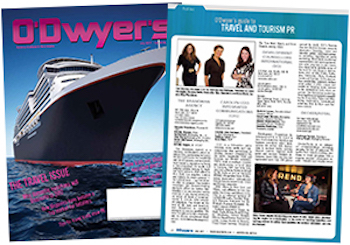

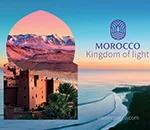 Weber Shandwick is providing PR and marketing communications services to the Moroccan National Tourist Office in New York.
Weber Shandwick is providing PR and marketing communications services to the Moroccan National Tourist Office in New York.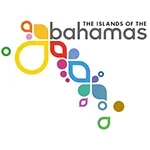 Finn Partners has filed its six-month contract with the Bahamas Ministry of Tourism, Investments & Aviation, which is worth $240K.
Finn Partners has filed its six-month contract with the Bahamas Ministry of Tourism, Investments & Aviation, which is worth $240K.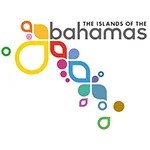 Weber Shandwick wrapped up its work for the Ministry of Bahamas at the end of 2023.
Weber Shandwick wrapped up its work for the Ministry of Bahamas at the end of 2023.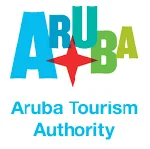 The Aruba Tourism Authority is boosting its budget 29.4 percent to $2.2M at Zeno Group, according to its 2024 contract, effective Jan. 1.
The Aruba Tourism Authority is boosting its budget 29.4 percent to $2.2M at Zeno Group, according to its 2024 contract, effective Jan. 1. As inflation continues to impact spending, consumers are revisiting their list of what they’re willing to spend more of their money on. Luckily for those in the travel industry, experiences seem to be trending up on the “splurge” list.
As inflation continues to impact spending, consumers are revisiting their list of what they’re willing to spend more of their money on. Luckily for those in the travel industry, experiences seem to be trending up on the “splurge” list. 


 Have a comment? Send it to
Have a comment? Send it to 
No comments have been submitted for this story yet.